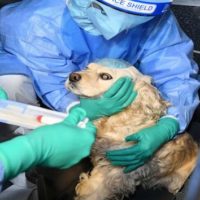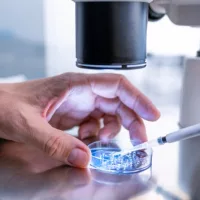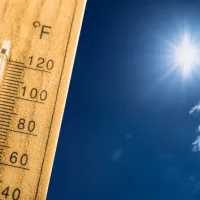
Seoul Metropolitan GovernmentBY: DR. JONATHAN CHAN, ABC NEWS
(NEW YORK) — Last month, the nation watched as Winston the gorilla came down with COVID-19 and then recovered. So far, the virus has been detected in zoo animals like Winston, domestic animals like cats and dogs, and most worryingly, in farmed and wild animals like mink and ferrets.
Now, animal experts are warning that if the virus is circulating freely in wild animals, it might develop mutations and evolve into a new version – one that is capable of jumping back into humans.
January has been the deadliest month in the United States since the start of the COVID-19 pandemic last year, as efforts to distribute and administer the new vaccines continue.
And just as the United States is ramping up its efforts to find new COVID variants among people, many scientists are speaking out that we should be doing the same for animals.
“In the current pandemic, we know that the virus originated in wildlife, most likely bats, then jumped to people,” said Dr. Jonathan Epstein, an epidemiologist and vice president for science and outreach at EcoHealth Alliance. “And we know that there are a lot of other animals that are susceptible to this virus.”
Epstein explained that the COVID virus is so widespread and so many people are infected that there is a significant possibility that wildlife could be exposed through the environment, contaminated waste water or direct contact with humans.
Minks are small, carnivorous mammals that are raised mostly for their furs. So far, six countries, Denmark, the Netherlands, Spain, Sweden, Italy and the United States, have reported COVID virus infections in their mink farms to the World Health Organization.
While there is no evidence yet that the virus found in the farmed mink population is more dangerous than what has already been detected in humans, the virus does spread easily among minks that are housed closely together.
But infections in farmed and captive animals can be managed. Some farmed mink populations in Europe, for example, have been culled. Meanwhile, zoo animals like Winston are isolated and treated for their infections to limit the spread of disease.
But it’s a different story once the virus jumps into wildlife.
As scientists were investigating the outbreak of COVID among farmed minks, they discovered that the virus had already spread to wild minks as well.
“What we are seeing right now is known as a spill back infection,” said Dr. Christine Kreuder Johnson, a professor of veterinary medicine and ecosystem health at the University of California—Davis School of Veterinary Medicine. The virus, which likely originated from bats, spilled over to the human population and has now “spilled back” to infect other animal species.
According to Johnson, the threat of spill back includes both wildlife populations and zoo animals. Felines, including both tigers and domestic cats, are suspected to have been infected from their human owners or caretakers.
“Widespread transmission in any animal species could be a source of virus mutation,” she said.
While there is limited evidence that the virus can significantly spread to humans from animals, scientists are concerned that the virus could change while infecting other animal species. If it spills back, or returns, to infect humans again, it could come back as a new variant.
But more testing and research still needs to be done to better understand the extent the virus can spread in animals.
“We may never have the answer to the question about how COVID spreads in wild animals,” said Dr. Tracey McNamara, a professor of pathology at the Western University of Health Sciences College of Veterinary Medicine.
“Testing in animals was discouraged from the very beginning, largely because they were concerned that there were not enough supplies,” she said. “Testing in humans and wild animals use the same types of swabs.”
In a statement, the Centers for Disease Control and Prevention does not currently recommend routine, widespread testing among animals, and animal testing is available if “public health and animal health officials agree the animal’s case merits testing.”
That doesn’t mean, however, that we won’t be able to learn more about the spread of COVID in different species, through a process known as retrospective serologic surveys. As McNamara explained, every time a staff member interacts with or handles an animal at a zoo, they obtain a blood sample and store that in a blood bank.
Those samples are saved, and with enough funding and support, scientists could look back at those samples and potentially learn more about when COVID may have first appeared in different wild and domestic animal species.
“So much funding was poured into the development of the COVID vaccine,” said McNamara. “Creating a vaccine is very expensive, but there may be less expensive modes to decrease spreading between animal species.”
That includes treatment and prevention efforts specifically designed for captive and farmed animals. And for wild animals, it means more robust monitoring and testing — and reducing direct contact with wildlife when possible.
Ultimately, the threat of “spill back” is a reminder that almost all virus outbreaks are zoonotic, meaning they originate in animals and wildlife.
“These pandemics don’t happen by accident,” Epstein said. “They happen because of human activity that changes the environment around us and brings us into closer contact with wildlife.”
Jonathan Chan, M.D., is an emergency medicine resident at St. John’s Riverside Hospital and a contributor to the ABC News Medical Unit.
Copyright © 2021, ABC Audio. All rights reserved.















